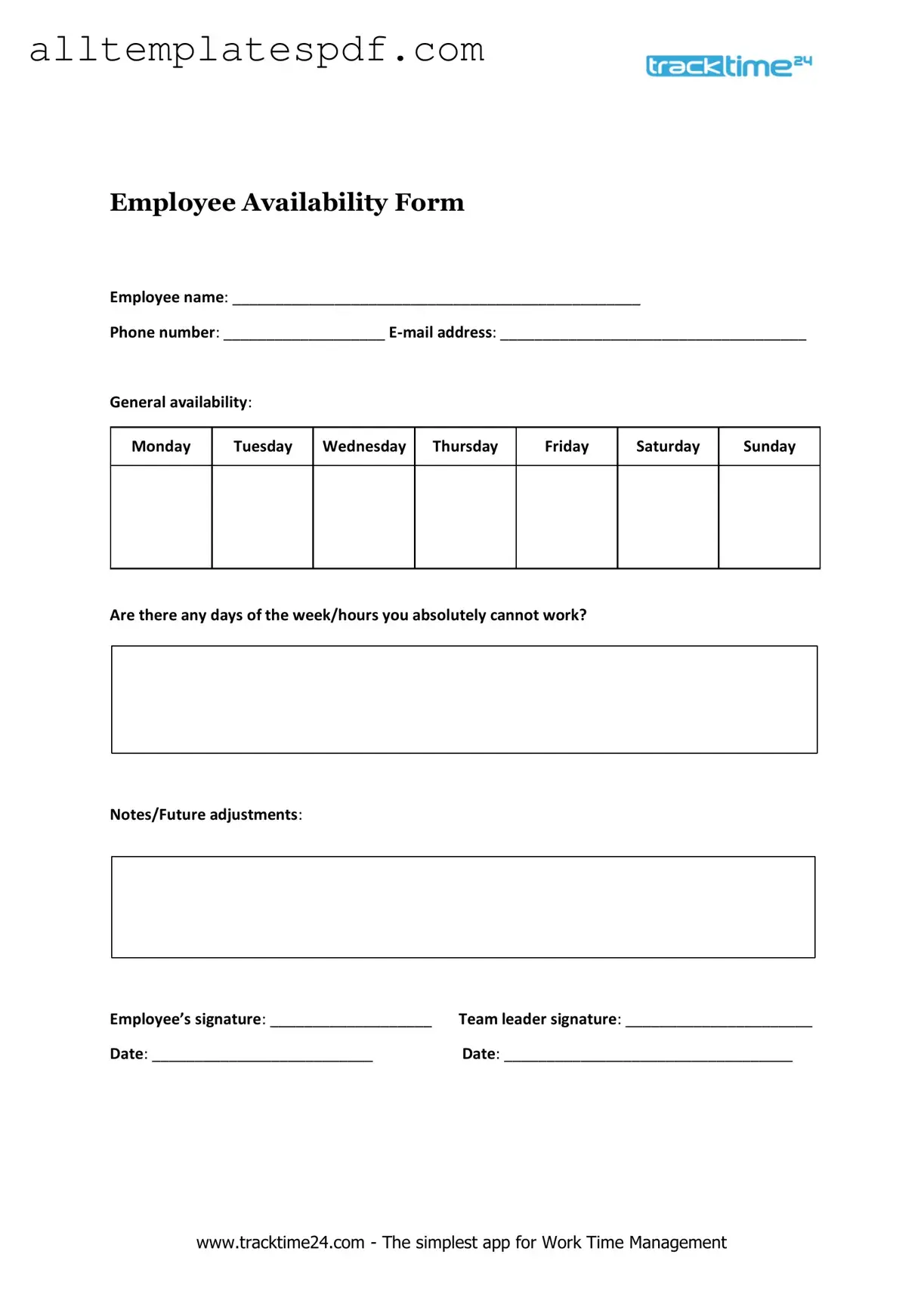Completing the Employee Availability form can seem straightforward, yet many individuals encounter common pitfalls that can lead to confusion or scheduling conflicts. One frequent mistake is failing to provide accurate contact information. This can hinder communication between employees and management, especially when changes to schedules arise.
Another common error is not indicating all available shifts. Employees may overlook specific times they can work, which could lead to missed opportunities for hours. It’s crucial to be thorough and list every potential availability to ensure that managers can effectively plan staffing needs.
Inconsistent availability is also a significant issue. Some individuals may submit a form that reflects their availability one week but then fail to update it when their circumstances change. Keeping the form current is essential for both employees and employers to avoid misunderstandings.
Additionally, many people neglect to consider travel time. Employees might indicate their availability without accounting for the time it takes to commute to work. This oversight can lead to late arrivals and dissatisfaction for both parties.
Another mistake is failing to communicate preferences for specific days off. Employees may assume that management is aware of their personal commitments, but without clear communication, misunderstandings can arise. It is important to specify any days that are off-limits.
Some individuals also struggle with the format of the form itself. Whether it’s using the wrong units of time or misinterpreting the instructions, this can lead to errors in how availability is recorded. Taking the time to read and understand the form thoroughly can mitigate these issues.
Moreover, people sometimes forget to check for conflicts in their schedules. For instance, if an employee has a part-time job or other obligations, these should be clearly noted. Overlapping commitments can create unnecessary complications.
Another mistake is waiting until the last minute to submit the form. Procrastination can lead to rushed decisions and incomplete information. Submitting the form early allows for better planning and adjustments, benefiting everyone involved.
Finally, some employees may not take the form seriously, viewing it as a mere formality. However, it is a critical tool for effective scheduling. Treating it with the importance it deserves can help ensure a smoother workflow and better job satisfaction.
